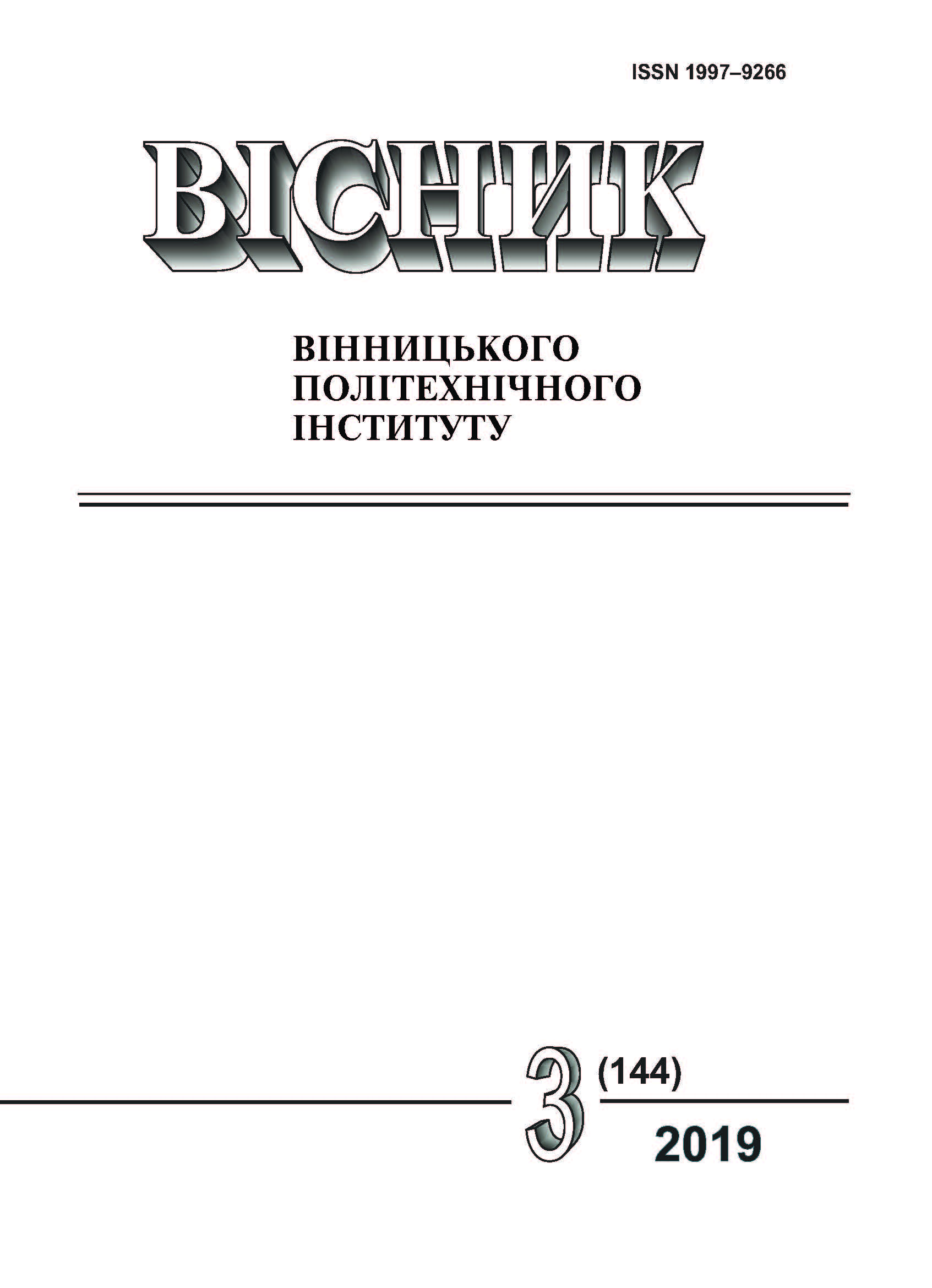Deformation of Low-Carbon Wire in the Process of its MultistageCold Drawing
DOI:
https://doi.org/10.31649/1997-9266-2019-144-3-103-110Keywords:
deformability, cold drawing, plasticity diagram, stress state indicator, deformation, low carbon wireAbstract
The aim of the work is to analyze the distribution of deformations over the cross section, features of the deformation paths, also is carried out the assessment of wire deformability from low carbon steels typical for the modern market G3Si1 and Sv-08G2S during its multistage cold drawing. For the analysis, one of the typical technological processes of drawing with 16 transitions was selected, which is aimed at the production of wire with a diameter of 0.8 mm from a rod of diameter 5,5 mm. This process is implemented in real production in the PJSC «PlasmaTek» environment. The mechanics of cold drawing process are carried out using the finite element method. The evaluation of deformability was performed using the V. Ogorodnikov criterion, which takes into account the nonlinear nature of damage accumulation, the features of deformation paths in the form of derivatives, as well as the stress state indicator, taking into account the third invariant of the stress tensor (volume of the stress state). The analysis of the distribution of deformations in the section through their representation in relative units carried out. It is shown that the graphs of the distribution of strains over the cross section practically coincide for different transitions and diameters of the workpieces. The coefficient of non-uniformity of deformations practically does not depend on the number of transitions and the degree of stretching and reaches 0, 87. The deformation paths in the hazardous area — on the axis of the wire — are analyzed — they are characterized by a significant change in the derivative and curvature of the deformation territory. It is established that the indicators of the stress state, taking into account the volume of the stress state (in particular, the parameter Nadai–Lode) practically do not change during cold drawing. Сonsidering at third invariant of the stress tensor with the appropriate deformability criterion makes it possible to correctly evaluate the deformability of low-carbon welding wire in its drawing process in existing drawing practices and to further implement on this basis the assessment of technological heredity in the form of residual plasticity, hardness, and ect.
References
В. В Парусов,. А. Б. Сычков и Э. В. Парусов, Теоретические и технологические основы производства высокоэффективных видов катанки. Днепропетровск, Украина: АРТ-ПРЕСС, 2012.
В. П. Костюченко, М. А. Таранец, З. А. Дегтяренко, С. А. Шамин и В. Д. Кузяков, «Особенности производства сварочной омедненной проволоки Св-08Г2С,» Метизы, № 2 (18), с.60-63, 2008.
А. М. Должанский и Н. Н. Очеретная, «Определения маршрутов волочения при уменьшении интенсивности упрочнения проволоки,» Металлургическая и горнорудная промышленность, № 2, с. 60-62, 2008.
С. М. Головизин, Д. С. Терских, В. А. Харитонов и Л. Э. Пыхов, «Влияние кратности и скорости волочения на качество высокоуглеродистой проволоки,» Сталь, № 11, с. 46-48, 2016.
В. А. Харитонов и А. Ю. Столяров, Совершенствование технологии производства высокопрочной проволоки для армирующих материалов автомобильных шин. Магнитогорск, Россия: изд-во Магнитогорск. гос. техн. ун-та им. Г. И. Носова, 2016.
В. А. Огородников, Деформируемость и разрушение металлов при пластическом формоизменении. К., СРСР: УМК ВО, 1989.
В. А. Огородников, А. В. Грушко и А. В. Гуцалюк, «Выбор критериев деформируемости при оценке использованного ресурса пластичности в процессах обработки металлов давлением,» Вісник Національного технічного університету «ХПІ» : зб. наук. пр, серія: Інноваційні технології та обладнання обробки матеріалів у машинобудуванні та металургії, № 43 (1086), с. 127-136, 2014.
В. А. Огородніков, О. Ю. Співак та О. В. Грушко, Деформація волочінням і фізико-механічні властивості тонких термопарних дротів. Вінниця, Україна: УНІВЕРСУМ-Вінниця, 2014.
В. М. Михалевич, Тензорні моделі накопичення пошкоджень. Вінниця, Україна: УНІВЕРСУМ-Вінниця, 1998.
В. М. Михалевич, Ю. В. Добранюк та О. В. Краєвський, «Порівняльне дослідження моделей граничних пластичних деформацій,» Вісник машинобудування та транспорту, № 2 (8), с. 56-64, 2018.
A. V. Grushko, V. V. Kukhar and Y.O. Slobodyanyuk, «Phenomenological model of low-carbon steels hardening during multistage drawing,» Solid State Phenomena, vol. 265, pp. 114-123, 2017.
О. В. Грушко та Ю. О. Слободянюк, «Механічні характеристики сталей G3SI1 та СВ-08Г2,» Вісник Вінницького політехнічного інституту, № 4 (139), с. 103-109, 2018.
В. М. Михалевич та Ю. В. Добранюк, Моделювання напружено-деформованого та граничного станів поверхні циліндричних зразків при торцевому стисненні. Вінниця, Україна: УНІВЕРСУМ-Вінниця, 2013.
V. Kraievskyi, V. Mykhalevych, Y. Dobranyuk, D. Sawicki and K. Mussabekov, “Selection of optimal path of strain rate change in the process of multistage hot deformation under the condition of the equal duration of stages,” Photonics Applications in Astronomy, Communications, Industry, and High-Energy Physics Experiments, Proc. SPIE 10808, 2018.
Downloads
-
PDF (Українська)
Downloads: 174
Published
How to Cite
Issue
Section
License
Authors who publish with this journal agree to the following terms:
- Authors retain copyright and grant the journal right of first publication.
- Authors are able to enter into separate, additional contractual arrangements for the non-exclusive distribution of the journal's published version of the work (e.g., post it to an institutional repository or publish it in a book), with an acknowledgment of its initial publication in this journal.
- Authors are permitted and encouraged to post their work online (e.g., in institutional repositories or on their website) prior to and during the submission process, as it can lead to productive exchanges, as well as earlier and greater citation of published work (See The Effect of Open Access).





